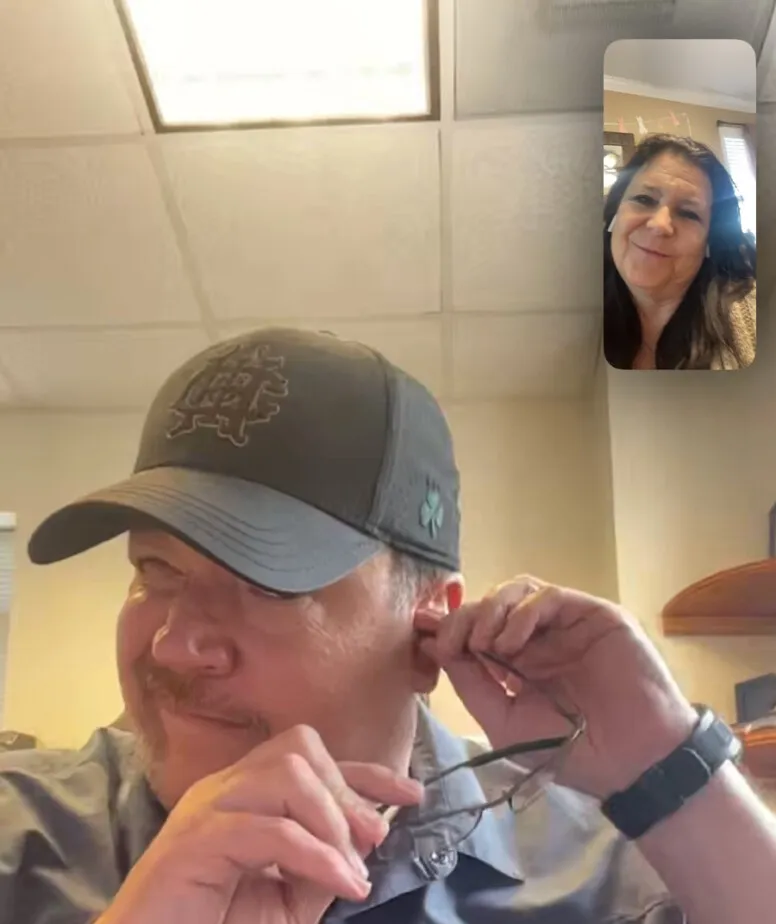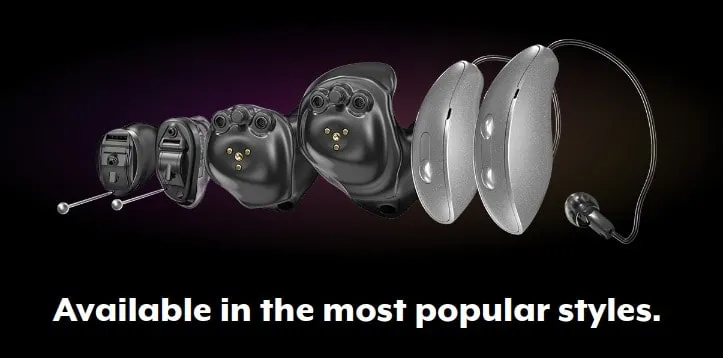Discover the Optimal Duration for Wearing Hearing Aids: Insights from an Expert Audiologist!
Uncover the secrets to maximizing the benefits of your hearing aids with guidance from a seasoned audiologist who has fitted countless devices over the years. One of the most common questions I receive is, “How many hours a day should I wear my hearing aids?” The answer is simple but crucial: wear your hearing aids as much as possible during your waking hours. In this article, we will delve into the reasons behind this recommendation and explore effective strategies to help you seamlessly adapt to consistent hearing aid usage.
Consistency for Optimal Brain Function
Consistency is key when it comes to optimizing brain function. The brain thrives on regular stimulation, and this applies to auditory input as well. By wearing your hearing aids throughout the day, even in quieter situations like reading a book at home, you provide your brain with a constant stream of sound. This consistent stimulation helps your brain adapt to processing auditory information more effectively.
When you wear your hearing aids consistently, you create a solid foundation for coping with different sound environments. It’s like preparing your brain for the outside world. By exposing yourself to various levels of sound, including quiet settings, you allow your brain to adjust gradually. This way, when you step into a noisy restaurant or attend a social gathering, the amount of sound won’t feel as overwhelming. The ultimate goal is to make the transition between different environments as seamless as possible.
Many studies have shown that the more you wear the hearing aids the more satisfied that you will be with them.
Also, note it is best to wear both hearing aids, do not wear just one at a time.
Understanding the Challenges of Adaptation

Adapting to hearing aids can be a significant challenge, especially if your hearing loss has developed gradually over time. Unlike sudden hearing loss, most people have long-term slowly developing hearing loss that necessitates retraining your brain to process sounds that it hasn’t encountered in a while. Wearing your hearing aids all day long is an endurance process, and it’s natural to face difficulties during the initial stages.
You have lived in a quiet world and are entering a very noisy world. It will take time to adjust.
It’s important to be patient and allow yourself time to adapt. Start by wearing your hearing aids for shorter periods and gradually increase the duration. This gradual approach will help your brain acclimate to the new sounds and prevent overwhelming sensations. It would be best if you ultimately aimed for wearing hearing aids at least 8 hours a day. Additionally, your audiologist can offer guidance and support throughout this adaptation process.
Gradual Volume Increase
To ease the transition to full-time hearing aid use, it can be helpful to gradually increase the volume over time. During the initial weeks of wearing your hearing aids, you can begin by turning down the volume slightly. This adjustment allows your brain to get used to the amplified sounds without overwhelming your auditory system. As you become more comfortable, you can gradually increase the volume until you reach the recommended level.
Many major hearing aid manufacturers offer a feature called auto adaptation, which automatically adjusts the volume of the hearing aids. This feature can be particularly useful during the initial stages of adaptation, as it takes the guesswork out of finding the right volume setting. Your audiologist can guide you in utilizing this feature and ensure that the volume increase is gradual and comfortable for you.
Setting Personal Goals
Another effective strategy is to set personal goals for the duration of wearing your hearing aids each day. Starting with a realistic target, such as two hours on the first day, you can progressively increase the wear time by an additional half-hour each subsequent day. This gradual approach allows your mind and body to adapt to wearing hearing aids for longer periods.
Setting personal goals not only provides structure but also gives you a sense of achievement as you gradually reach your desired wear time. It’s important to note that the adaptation process varies from person to person. Some individuals may adapt quickly, while others may require more time. Regular communication with your audiologist is essential during this journey, as they can provide guidance, and support, and make any necessary adjustments to ensure you have the best possible hearing aid experience.
When Not to Wear Your Hearing Aids
While wearing your hearing aids for most of your waking hours is recommended, there are certain situations when it is advisable to remove them. Let’s explore some instances when it’s best to take off your hearing aids for your safety and to protect the devices.
During Sleep
It is not necessary to wear your hearing aids while sleeping. In fact, it is generally more comfortable to remove them during bedtime. Wearing hearing aids while sleeping can cause discomfort and may even result in damage to the devices. It’s important to give your ears and skin a break, allowing them to breathe and preventing any potential irritation.
Avoiding Moisture and Water Exposure
Hearing aids are sensitive electronic devices that should be protected from moisture and water. Even if you have waterproof hearing aids, it is still best not to risk exposing them to excessive moisture. Therefore, it is essential to remove your hearing aids before bathing, showering, swimming, or in the sauna. Moisture can damage the internal components of the devices, affecting their functionality and lifespan. Always remember to store your hearing aids in a dry and safe place while engaging in water-related activities.
Hearing Protection Situations
In certain situations that require hearing protection, it is recommended to remove your hearing aids. This includes activities like mowing the lawn, operating power tools, and especially when using firearms or while hunting. Hearing protection devices, such as earplugs or earmuffs, are specifically designed to reduce noise exposure and protect your hearing in these situations. Wearing hearing aids simultaneously with hearing protection can compromise the effectiveness of both. Therefore, it is crucial to prioritize your hearing safety by removing your hearing aids and using appropriate hearing protection when engaging in activities that pose a risk of excessive noise exposure.
By being mindful of these situations and taking proper care of your hearing aids, you can ensure their longevity and maintain their optimal functionality. Remember to consult with your audiologist for specific guidelines and recommendations regarding the care and usage of your particular hearing aids.
What to Do If You Dislike Your Hearing Aids
If you find yourself disliking or struggling with your hearing aids, it’s essential to address the issue promptly to ensure a positive hearing experience. Here are several options to consider if you’re unhappy with your current hearing aids:
| Options | Description |
|---|---|
| Option 1: Adjusting Settings with Your Audiologist | Return to your audiologist and have them adjust the settings of the devices to better suit your needs and preferences. |
| Option 2: Exploring Different Hearing Aid Styles | Return the hearing aids you bought and try a different style such as a RIC or ITE device that may better suit your specific needs. |
| Option 3: Addressing Background Noise Concerns | Upgrade to a higher level of technology in your hearing aids or utilize accessories such as remote microphones or Bluetooth streamers to reduce background noise. |
| Option 4: Seek Support and Counseling | Seek support from counselors, support groups, or online communities to receive emotional support and guidance during the adjustment process. |
Option 1: Adjusting Settings with Your Audiologist
If you’re dissatisfied with your hearing aids, it’s recommended to return to your audiologist for assistance. They can fine-tune and adjust the settings of your devices to better suit your specific needs and preferences. Your audiologist has the expertise to make necessary modifications that can enhance your comfort and overall satisfaction. Whether it’s adjusting the volume, programming specific features, or addressing any discomfort, working closely with your audiologist can make a significant difference in your hearing aid experience.

If you bought OTC hearing aids, you may want to consider visiting an audiologist and trying professionally fit devices. If you are worried about the cost, check out places like ziphearing which will give you final prices upfront.
Option 2: Exploring Different Hearing Aid Styles

Sometimes, the style or design of the hearing aids may contribute to your dissatisfaction. If this is the case, consider returning the hearing aids you purchased and exploring different styles that may better suit your needs. For instance, if you initially tried behind-the-ear (BTE) hearing aids, you could opt to try receiver-in-canal (RIC) or in-the-ear (ITE) devices or invisible hearing aids. Each style has its unique advantages, and selecting the right style for your specific hearing requirements and preferences can greatly improve your comfort and satisfaction.
Option 3: Addressing Background Noise Concerns
Background noise is a common complaint among hearing aid users, which can affect speech understanding and overall enjoyment. If you’re struggling with background noise, there are a few solutions to consider. Firstly, you can explore upgrading to a higher level of technology in your hearing aids. Advanced hearing aid models often come equipped with noise reduction features and algorithms that help to minimize the impact of background noise.
Additionally, utilizing accessories can significantly reduce background noise. For instance, some hearing aids offer compatible accessories such as remote microphones or Bluetooth streamers. These accessories can help to improve speech understanding in noisy environments by focusing on the sound source of interest and reducing surrounding noise distractions.
Option 4: Seek Support and Counseling
Adjusting to hearing aids can be a challenging process, and it’s common to feel frustrated or discouraged along the way. Seeking support from a counselor, support groups, or online communities can be immensely helpful. These resources provide an opportunity to connect with others who have gone through similar experiences, share tips and strategies, and receive emotional support. Additionally, counseling services can help you navigate the emotional aspects of adjusting to hearing aids and provide guidance on coping with any frustrations or concerns you may have.
Remember, open and honest communication with your audiologist is crucial throughout this process. They are there to help you find the best solutions and ensure your hearing aids meet your specific needs and preferences. Don’t hesitate to reach out to them whenever you encounter challenges or have questions about your devices.
By exploring these options and working closely with your audiologist, you can find solutions to address your concerns and improve your overall satisfaction with your hearing aids. Remember, the goal is to achieve a positive hearing experience that enhances your quality of life.

